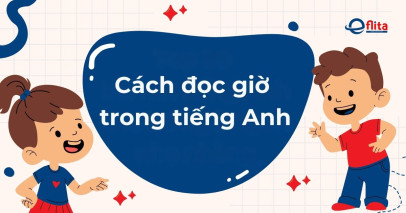Thì hiện tại đơn (Simple Present) là một trong những thì ngữ pháp cơ bản và quan trọng trong tiếng Anh, giúp người học diễn đạt những hành động, thói quen, sự thật hiển nhiên trong cuộc sống hàng ngày. Bài viết này sẽ giúp bạn nắm vững cấu trúc, cách sử dụng, các trường hợp đặc biệt liên quan đến thì hiện tại đơn.
Cấu trúc thì hiện tại đơn
Thì hiện tại đơn được sử dụng chủ yếu trong các câu khẳng định, phủ định và nghi vấn. Cấu trúc tổng quát của thì này bao gồm động từ "to be" và động từ thường, tùy thuộc vào chủ ngữ mà có cách chia khác nhau.
Dạng khẳng định
Trong tiếng Anh, câu khẳng định trong thì hiện tại đơn thường được chia thành hai dạng: câu với động từ "to be" và câu với động từ thường.
1. Sử dụng động từ "to be"
Cấu trúc: S + am/is/are + N hoặc Adj
Ví dụ:
"I am a student." (Tôi là sinh viên.)
"She is my friend." (Cô ấy là bạn tôi.)
"They are teachers." (Họ là giáo viên.)
2. Sử dụng động từ thường
Cấu trúc: S + Vs/es
Đối với ngôi thứ nhất và thứ hai (I, you, we, they), sử dụng động từ nguyên mẫu.
Đối với ngôi thứ ba số ít (he, she, it), động từ sẽ thêm "s" hoặc "es."
Ví dụ:
"He plays football every Sunday." (Anh ấy chơi bóng đá mỗi Chủ Nhật.)
"They go to school by bus." (Họ đi học bằng xe buýt.)
Khi áp dụng thì hiện tại đơn, bạn nên chú ý đến các từ chỉ tần suất như "always," "usually," "sometimes," và "never" để làm rõ hơn về tần suất của hành động.
Các trạng từ này giúp xác định mức độ thường xuyên diễn ra của hành động, từ đó tạo nên bức tranh ngữ nghĩa phong phú hơn trong câu văn.
Thì hiện tại đơn là nền tảng ngữ pháp cơ bản, giúp bạn giao tiếp tốt hơn và thể hiện ngôn ngữ của mình một cách tự nhiên.
Dạng phủ định
Câu phủ định trong thì hiện tại đơn được hình thành chủ yếu bằng cách sử dụng trợ động từ "do" hoặc "does." Cấu trúc sẽ khác nhau tùy thuộc vào động từ sử dụng và chủ ngữ.
1. Với động từ thường
Cấu trúc: Chủ ngữ + do/does + not + động từ nguyên mẫu
Ví dụ:
"I do not like coffee." (Tôi không thích cà phê.)
"He does not play football." (Anh ấy không chơi bóng đá.)
2. Với động từ "to be"
Cấu trúc: Chủ ngữ + am/is/are + not
Ví dụ:
"I am not a student." (Tôi không phải là học sinh.)
"They are not at home." (Họ không ở nhà.)
Câu phủ định rất hữu ích trong giao tiếp, cho phép người nói thể hiện ý kiến và cảm xúc một cách rõ ràng hơn.
Dạng nghi vấn
Câu nghi vấn trong thì hiện tại đơn được xây dựng bằng cách khởi đầu bằng trợ động từ "do" hoặc "does," tùy thuộc vào chủ ngữ.
1. Với động từ thường
Cấu trúc: Do/Does + Chủ ngữ + động từ nguyên mẫu?
Ví dụ:
"Do you like coffee?" (Bạn có thích cà phê không?)
"Does he play football?" (Anh ấy có chơi bóng đá không?)
2. Với động từ "to be"
Cấu trúc: Am/Is/Are + Chủ ngữ + Noun/Adjective?
Ví dụ:
"Am I late?" (Tôi có muộn không?)
"Are they happy?" (Họ có hạnh phúc không?)
Chú ý:
Đối với Câu phủ định, phần động từ thường không được chia
S + don’t/ doesn’t + V(bare – nguyên thể)
Ví dụ:
Sai: He doesn’t likes pizza.
Đúng: He doesn’t like pizza.
Cách sử dụng thì hiện tại đơn
Diễn tả thói quen
Thì hiện tại đơn là yếu tố chính trong việc diễn tả thói quen hàng ngày của chúng ta. Mỗi người đều có những thói quen riêng, từ việc ăn uống đến lịch làm việc.
Các thói quen này thường được thể hiện thông qua cấu trúc S + V(s/es).
Một số ví dụ về thói quen:
"I brush my teeth every morning." (Tôi đánh răng mỗi sáng.)
"She drinks coffee every day." (Cô ấy uống cà phê mỗi ngày.)
"They go jogging twice a week." (Họ chạy bộ hai lần một tuần.)
Diễn tả sự thật hiển nhiên
Thì hiện tại đơn cũng rất thường được sử dụng để diễn tả sự thật hiển nhiên, mà không thay đổi theo thời gian.
Cấu trúc: Subject + Verb(s/es)
Các ví dụ khác về sự thật hiển nhiên có thể kể đến như:
"Water boils at 100 degrees Celsius." (Nước sôi ở 100 độ C.)
"The earth orbits the sun." (Trái đất quay quanh mặt trời.)
"Birds fly." (Chim bay.)
Diễn tả lịch trình và thời khóa biểu
Thì hiện tại đơn cũng là lựa chọn hoàn hảo để mô tả các hành động diễn ra theo lịch trình hoặc thời khóa biểu.
Ví dụ về lịch trình:
"The school starts at 8 AM." (Trường bắt đầu lúc 8 giờ sáng.)
"The bus arrives every thirty minutes." (Xe buýt đến mỗi 30 phút.)
"The meeting begins at 9 AM every Monday." (Cuộc họp bắt đầu lúc 9 giờ sáng mỗi thứ Hai.)
Diễn tả cảm xúc và tình trạng
Thì hiện tại đơn cũng hữu ích trong việc diễn tả cảm xúc và tình trạng của một cá nhân.
Ví dụ về cảm xúc:
"She feels happy today." (Hôm nay cô ấy cảm thấy vui.)
"I love chocolate." (Tôi thích sô cô la.)
"They are excited about the trip." (Họ hào hứng về chuyến đi.)
Dấu hiệu nhận biết thì hiện tại đơn
Nhận biết thì hiện tại đơn trở nên dễ dàng hơn khi bạn chú ý đến những dấu hiệu và trạng từ thời gian đi kèm.
Trạng từ thời gian
Trạng từ chính là một trong những yếu tố quan trọng để nhận diện thì hiện tại đơn. Một số trạng từ thường gặp bao gồm:
Always (luôn luôn)
Usually (thường xuyên)
Often (thường hay)
Sometimes (thỉnh thoảng)
Never (không bao giờ)
Seldom (rất hiếm)
Ví dụ câu với trạng từ thời gian:
She always gets up early (Cô ấy luôn dậy sớm.)
He always eats breakfast
They often visit their grandparents
Thời gian cụ thể
Cụm từ chỉ thời gian cụ thể cũng giúp nhận biết thì hiện tại đơn một cách hiệu quả. Những cụm từ này thường chỉ ra thời điểm chính xác mà hành động xảy ra trong hiện tại, ví dụ như:
Every day (mỗi ngày)
Every week (mỗi tuần)
Every month (mỗi tháng)
On Mondays (vào thứ Hai)
In the morning/afternoon/evening (vào buổi sáng/chiều/tối)
Ví dụ:
We go to the market every Sunday. (Chúng tôi đi chợ vào mỗi Chủ nhật.)
I walk my dog every day.
Một vài trường hợp đặc biệt bạn cần lưu ý
Khi sử dụng thì hiện tại đơn, có một số trường hợp và lưu ý mà người học cần chú ý để tránh sai sót. Việc nắm vững các điểm đặc biệt này giúp bạn tự tin và chính xác hơn trong giao tiếp hàng ngày.
1. Chia động từ "to be"
Cấu trúc: S + am/is/are + N/Adj.
Ví dụ: "He is a teacher." (Anh ấy là giáo viên.)
2. Chia động từ thường
Đối với động từ thường, việc chia động từ sẽ không giống nhau tùy theo ngôi:
Ngôi thứ ba số ít cần thêm -s hoặc -es.
Ví dụ: "She watches TV." (Cô ấy xem TV) và "He goes to school." (Anh ấy đi học.)
3. Câu phủ định và nghi vấn
Trong câu phủ định, sử dụng "do/does not":
Ví dụ: "I do not like coffee." (Tôi không thích cà phê.)
Trong câu nghi vấn, dùng "Do/does + S + V?"
Theo dõi kỹ những trường hợp đặc biệt này sẽ giúp bạn củng cố vững chắc kiến thức về thì hiện tại đơn và trở thành người nói tiếng Anh tự tin hơn.
Một số bài tập thì hiện tại đơn
Để củng cố kiến thức về thì hiện tại đơn, việc luyện tập là rất cần thiết. Dưới đây là một số bài tập giúp bạn ôn lại và nâng cao khả năng sử dụng thì này.
Bài 1. Bài tập thì hiện tại đơn dạng “chia động từ”
1. I usually (go) to school.
2. They (visit) us often.
3. You (play) basketball once a week.
4. Tom (work) every day.
5. He always (tell) us funny stories.
6. She never (help) me with that!
7. Martha and Kevin (swim) twice a week.
8. In this club people usually (dance) a lot.
9. Linda (take care) of her sister.
10. John rarely (leave) the country.
11. We (live) in the city most of the year.
12. Lorie (travel) to Paris every Sunday.
13. I (bake) cookies twice a month.
14. You always (teach) me new things.
15. She (help) the kids of the neighborhood.
Đáp án bài tập thì hiện tại đơn 1
1. I usually go to school.
2. They visit us often.
3. You play basketball once a week.
4. Tom works every day.
5. He always tells us funny stories.
6. She never helps me with that!
7. Martha and Kevin swim twice a week.
8. In this club people usually dance a lot.
9. Linda takes care of her sister.
10. John rarely leaves the country.
11. We live in the city most of the year.
12. Lorie travels to Paris every Sunday.
13. I bake cookies twice a month.
14. You always teach me new things.
15. She helps the kids of the neighborhood.
Bài 2. Bài tập thì hiện tại đơn với do/ does – do not/ does not
1. What ………………. they wear to work?
2. She ……………. not talk much.
3. Where ………………. he work?
4. John ……………… know much about sailing.
5. I ………………… not have the time or patience to cook a proper meal.
6. I am too busy these days and I ……………… manage to leave office on time.
7. ………………. Susie come here often?
8. ……………….. you find Berlin’s weather cold?
9. Raj ……………….. not smoke or drink.
10. ……………….. she know what she is doing?
Đáp án bài tập thì hiện tại đơn 2
1. What do they wear to work?
2. She does not talk much.
3. Where does he work?
4. John do know much about sailing.
5. I do not have the time or patience to cook a proper meal.
6. I am too busy these days and I do manage to leave office on time.
7. Does Susie come here often?
8.Do you find Berlin’s weather cold?
9. Raj do not smoke or drink.10. Does she know what she is doing?
Bài 3. Bài tập thì hiện tại đơn với have/has – have not/ has not
1. She________ a new shirt today.
2. I usually________ lunch at 6 a.m
3. We________a holiday in July every year.
4. They don’t________breakfast every morning.
5. Linh doesn’t usually________ lunch.
6. They________breakfast together everyday.
7. We ______ some cars.
8. She ______ many boy friends.
9. Nicky always ______ lunch at a Thailand restaurant.
10. He ______ some apples.
Đáp án bài tập thì hiện tại đơn 3
1. She has a new shirt today.
2. I usually have lunch at 6 a.m
3. We have a holiday in July every year.
4. They don’t have breakfast every morning.
5. Linh doesn’t usually have lunch.
6. They have breakfast together everyday.
7. We have some cars.
8. She has many boy friends.
9. Nicky always has lunch at a Thailand restaurant.
10. He has some apples.
Bài 4. Bài tập thì hiện tại đơn dạng “chia động từ to be”
1. I …… at home.
2. She …… not at home in the morning.
3. We …… in the park.
4. This …… my new laptop.
5. Our friends …… on their summer holidays.
6. Uncle George …… a good football player.
7. The dog …… under the table.
8. He …… very funny.
9. The shoes …… white.
10. You …… right.
11. Susan …… good at tennis.
12. They …… in the house.
13. His T-shirts …… cool.
14. My sister …… a good swimmer.
15. She …… in Italy.
Đáp án bài tập thì hiện tại đơn 4
1. I am at home.
2. She is not at home in the morning.
3. We are in the park.
4. This is my new laptop.
5. Our friends are on their summer holidays.
6. Uncle George is a good football player.
7. The dog is under the table.
8. He is very funny.
10. You are right.
11. Susan is good at tennis.
12. They are in the house.
13. His T-shirts is cool.
14. My sister is a good swimmer.
15. She is in Italy.
Bài 5. Bài tập thì hiện tại đơn dạng sắp xếp câu hoàn chỉnh
1. loves/He/to/basketball/play.
2. school/He/goes/to.
3. Does/to/he/go/school?
4. to/She/an/e-mail/writes/her/best/friend.
5.He/thinks/he/handsome/is/very.
6. It/here/day/usually/rains/every/.
7. It/smells/kitchen/delicious/very/in/the.
8. We/sing songs/generally/all/together.
9. We/go/to/Sunday/a/gallery/every/.
10. he/write/email/Does/an?
Đáp án bài tập thì hiện tại đơn 5
1. He loves to play basketball.
2. He goes to school.
3. Does he go to school?
4. She writes an e-mail to her best friend.
5. He thinks he is very handsome.
6. It usually rains every day here.
7. It smells very delicious in the kitchen.
8. We generally sing songs all together.
9. We go to a gallery every Sunday.
10. Does he write an email?
Bài 6. Bài tập thì hiện tại đơn dạng “tìm lỗi sai”
1. He go to bed very early.
2. Does they live in Canada?
3. I am usually cook dinner for my family.
4. Are they have a meeting every week?
5. She don’t like tennis.
6. Does John has enough money?
7. He know the answer.
8. Robert playes baseball on the weekend.
9. They has lots of free time.
10. Do they usually driving to work?
Đáp án bài tập thì hiện tại đơn 6
1. He goes to bed very early.
2. Do they live in Canada
3. I usually cook dinner for my family.
4. Do they have a meeting every week?
5. She doesn’t like tennis.
6. Does John have enough money?
7. He knows the answer.
8. Robert plays baseball on the weekend.
9. They have lots of free time.
10. Do they usually drive to work?
Bài 7. Bài tập thì hiện tại đơn hoàn thành đoạn văn
My weekdays are quite busy! I ______ the day very early.
I ________ at 5:30 and ______ yoga till 6:15. Next, I ________ a shower and _______ a cup of coffee for myself. Then I _________ my notebook and _______ my schedule for the day. I am a makeup artist and I ______ makeup for businesswomen for important meetings, for brides on their wedding day, for birthday girls and for romantic dinners in the evening. I _______ a home-office, so I ________ and ________ at the same place.
Jake ______ as a hairdresser in our beauty center. He ______ our clients’ hair, and Allison _______ the photos of the beautiful women after makeup. At 1:30, we _______ lunch together. Allison ______ cooking, and she _______ delicious meals for us everyday.
In the evening, we _______ our office together. Allison _______ the dishes, I _______ the garbage and Jake _______ the floor. They _______ the office at 6:30.
Đáp án bài tập thì hiện tại đơn 7
My weekdays are quite busy! I start the day very early.
I get up at 5:30 and do yoga till 6:15. Next, I take a shower and make a cup of coffee for myself. Then I open my notebook and check my schedule for the day. I am a makeup artist and I do makeup for businesswomen for important meetings, for brides on their wedding day, for birthday girls and for romantic dinners in the evening. I have a home-office, so I live and work at the same place.
Jake works as a hairdresser in our beauty center. He does our clients’ hair, and Allison takes the photos of the beautiful women after makeup. At 1:30, we have lunch together. Allison loves cooking, and she cooks delicious meals for us everyday.
In the evening, we clean our office together. Allison washes the dishes, I take out the garbage and Jake mops the floor. They leave the office at 6:30.
Bài 8. Chuyển câu khẳng định sang câu phủ định
1. I am a teacher.
2. He is confident.
3. We are happy.
4. I have a bike.
5. She has a younger brother.
6. They have a problem.
7. I am a teacher.
8. He is a taxi driver.
9. We are happy.
10. We go to palace.
Đáp án bài tập thì hiện tại đơn 8
1. I am not a teacher.
2. He is not confident.
3. We are not happy.
4. I do not have a bike.
5. She does not have a younger brother.
6. They do not have a problem.
7. I am not a teacher
8. He is not a taxi driver
9. We are not happy
10. We do not go to palace
Tham khảo thêm 1 số bài tập thì hiện tại đơn tiếng Anh
Bài 1. Chọn dạng đúng của động từ ở thì hiện tại đơn hoặc thì hiện tại tiếp diễn (Dạng nâng cao)
She (run) because she’s late for her lesson.
Our teacher always (give) us lots of homework.
We (not want) to go to the concert.
What time (you / meet) Pete tomorrow?
I (not work) today. I’m on holiday.
People (speak) English in Jamaica.
Archie (not use) his computer at the moment.
(Tony / live) near the park?
Đáp án bài tập thì hiện tại đơn nâng cao 1
is running
gives
don’t want
are you meeting
‘m not working
speak
isn’t using
Does Tony live
Bài 2. Chọn động từ ở dạng hiện tại đơn thích hợp cho ngữ cảnh (Nâng cao)
“works, goes, starts, gets, does, ends, strives, feels, needs”
Eddie is a working student. He (1) to school in the afternoon. Then, he (2) as a part time car wash boy at night. He usually (3) his shift at the car wash shop at 8 PM and (4) at 2 AM. He only (5) a few hours of sleep because he still (6) to accomplish his assignments and projects in the morning. He also (7).
Đáp án bài tập thì hiện tại đơn nâng cao 2
1. goes
2. works
3. starts
4. ends
5. gets
6. needs
7. strives
Ngoài việc làm các bài tập này, bạn cũng có thể áp dụng chúng vào giao tiếp hàng ngày để cải thiện kỹ năng. Việc tương tác thực tế sẽ hỗ trợ người học cảm thấy thoải mái hơn với ngữ pháp.
Việc nắm vững thì hiện tại đơn không chỉ giúp bạn giao tiếp tốt hơn mà còn giúp bạn xây dựng nền tảng ngữ pháp vững chắc. Thông qua các cách sử dụng khác nhau, từ việc mô tả thói quen, sự thật hiển nhiên cho đến cảm xúc và lịch trình, bạn sẽ thấy rằng thì hiện tại đơn có nhiều ứng dụng hấp dẫn và phong phú trong cuộc sống hàng ngày.
THÔNG TIN LIÊN HỆ EFLITA:
Email: info@eflita.com
Hotline: 0862285868
Facebook: Eflita Edu - Tiếng Anh Gia Đình
Youtube: Eflita Edu - Tiếng Anh Gia Đình
Xem thêm bài viết khác:
Trọn bộ từ vựng tiếng Anh lớp 1 theo sách giáo khoa cho bé dễ học
Tổng hợp từ vựng tiếng Anh lớp 2 theo sách giáo khoa mới nhất
Trọn bộ các dạng bài tập tiếng Anh lớp 2 kèm đáp an cho tiết cho bé
Trọn bộ từ vựng tiếng anh lớp 3 cho cả năm học theo từng chủ đề
Tổng hợp bài tập tiếng Anh lớp 3 cho bé kèm giải thích đáp án chi tiết
Mẹo phát âm ed chuẩn, dễ nhớ và đơn giản nhất bằng câu thần chú












Cameron Williamson
Duis hendrerit velit scelerisque felis tempus, id porta libero venenatis. Nulla facilisi. Phasellus viverra magna commodo dui lacinia tempus. Donec malesuada nunc non dui posuere, fringilla vestibulum urna mollis. Integer condimentum ac sapien quis maximus.
Rafin Shuvo
Duis hendrerit velit scelerisque felis tempus, id porta libero venenatis. Nulla facilisi. Phasellus viverra magna commodo dui lacinia tempus. Donec malesuada nunc non dui posuere, fringilla vestibulum urna mollis. Integer condimentum ac sapien quis maximus.